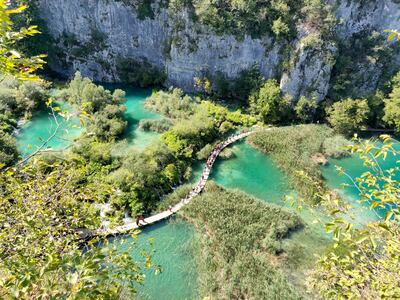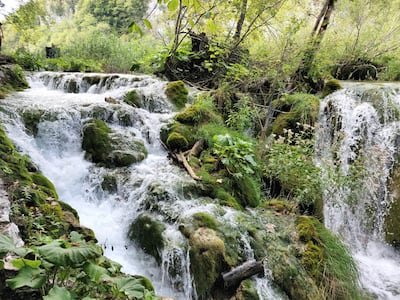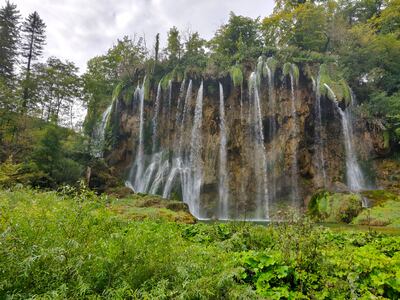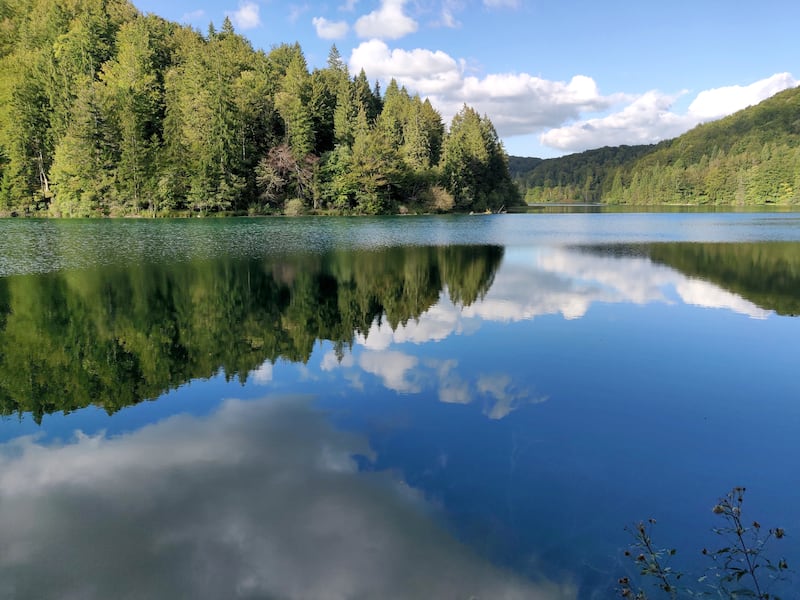The air is so pure that my city-dwelling lungs send a puzzled question to my brain as I breathe in. The water is so still, sunlight glints off its surface, casting sinuous reflections onto the shore. This is the stuff of postcards — powder-blue skies and emerald-green foliage, with hilly peaks silhouetted in the distance.
Best of all, my husband and I are the only people for kilometres. We walk up and down the isolated trail, hardly able to believe we have it all to ourselves. After all, Plitvice Lakes National Park is supposed to be one of the most popular and crowded tourist attractions in Croatia, welcoming more than one million visitors annually.
But then, we are not inside the formal boundaries of the park, but at the outer corners of the Proscansko jezero, or lake, far removed from the madness that engulfs these parts on most days.
Plitvice (pronounced Pleet-vith-suh) is less than three hours from Zagreb, but we took our time along the narrow hilly roads, stopping frequently to enjoy the views and the odd cup of coffee. And so we reached our guest house way past lunchtime, too late to use our pre-booked tickets for the park.

I am thrilled that we have chosen this secluded place to stay, given the chaotic jumble of hotels and guest houses crammed on the main road close to the park gates. I could easily sit all evening on the small balcony outside my room, looking at the geese, ducks, cows and dogs frolicking at this functional farm next to a placid stream.
But Gojko, the friendly owner of Guest House Koncar, is insistent that we get out and explore the lake that’s almost in their backyard. This one is very special, and you don’t even need tickets, he urges us. A couple of hours later, I’m sending up a quiet thanks to him from my stone seat on the shore.
The next morning, we drive out bright and early to Gate 2 of the national park, which we have entry tickets for. The walk from there is almost entirely downhill, on a network of boardwalks reached by a quick ride on the park’s sightseeing train. Water is a constant companion over the course of our hike — in the form of sprawling lakes, gurgling brooks and shimmering waterfalls, sometimes all contained within a single vista, which constantly shifts in colour, depending on the mood of the sun high above and the presence of minerals deep below.

Densely forested with beech, spruce and fir trees, hiding bears and wolves, 321 species of butterflies and more than 75 endemic plants, Plitvice Lakes National Park covers an area of 300 square kilometres. The park is dotted with 16 lakes, interconnected by dozens of waterfalls and streams, and strewn with millennia-old limestone caves and canyons. It was declared a National Park in 1949 and included in Unesco’s list of world heritage sites in 1979 for its outstanding geological and ecological value.
There are eight defined walking routes through the park, and we choose one that takes us on a neat 9 km circuit. We walk at a leisurely pace, with frequent stops along the way — not due to over-exertion, but because of our sheer delight and awe at the terrain. And since we are not in a rush to get anywhere, we also end up exploring little paths that branch off into unexpected caves and viewpoints.
Given how tranquil Plitvice is despite the throngs of tourists, it is difficult to imagine that this is where the Yugoslav Wars broke out in 1991. Like the rest of Croatia, the park has put its ravaged past behind it, hiding its bloody scars behind these colourful landscapes.

We eventually reach the banks of Kozjak lake and a large electric boat transports us to its other side — to the starting point of the Lower Lakes section. If the Upper Lakes have been mostly even surfaces with the gentlest of gradients, this part of Plitvice is all ups and downs, steep climbs to strategic viewpoints and sudden descents into the boardwalk nearly at water level. It does not feel as open and expansive, given the way the vertiginous limestone canyons and cliffs of the Korana river loom all around.
But it is just as picturesque, if more raw and rough. The Lower Lakes are also home to the park’s more dramatic waterfalls, including the Veliki Slap and the Sastavci Slap, both tumbling forth not as one giant force, but as several milky cascades.
Our day in Plitvice is long but, after seven hours of hiking, we feel rejuvenated, even exhilarated — with the pervasive blues and greens soothing the body, as well as the soul.






